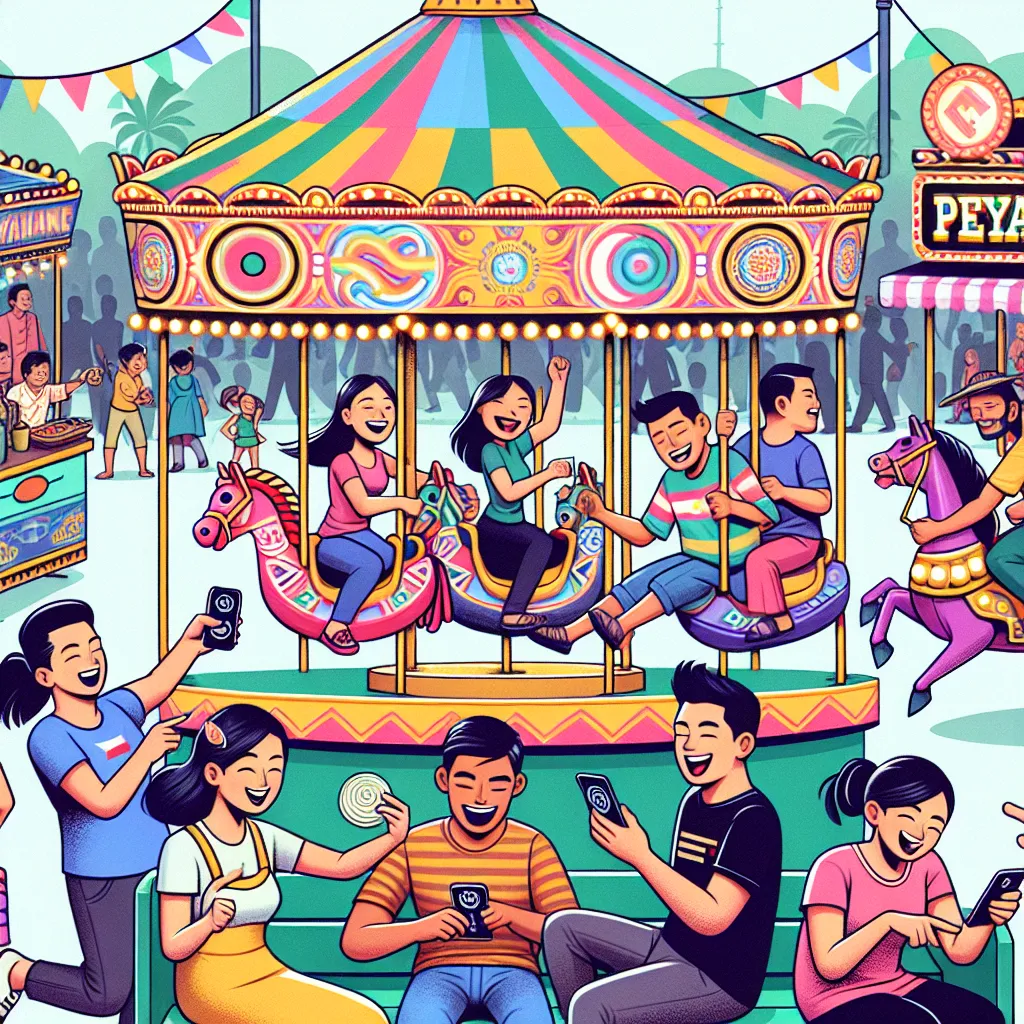Peryagame and peryahan games have been an enduring part of Filipino culture for decades, characterized by their festive atmosphere, colorful booths, and exciting challenges that attract all ages. Rooted in the traditional perya or carnival setup, these games offer entertainment and an opportunity to test one’s luck and skills, often with small bets and prizes involved. In recent years, with the rise of digital technology and mobile payment platforms, perya game gcash integration has emerged as a game-changer, revolutionizing the way Filipinos interact with these beloved games and enhancing the overall carnival experience.
To better understand this evolution, it’s important to first examine what peryagame and peryahan games represent. Commonly found in town fiestas, local fairs, and special events, peryahan games encompass a range of activities such as ring toss, dart balloons, shooting galleries, and other skill-based or luck-based challenges. Traditionally, participants pay a small fee in cash to engage in these games, with winnings often consisting of stuffed toys, kitchen appliances, or other prizes. These games offer not only leisure and excitement but also social interaction and community spirit, making them a cultural staple throughout the Philippines.
However, the traditional cash-based method posed several challenges for both players and operators, including the inconvenience of handling physical money, security risks related to cash management, and inefficiencies in accounting for daily earnings. Enter GCash, the popular mobile wallet and digital payment platform widely used in the Philippines. GCash provides a seamless, secure, and convenient way for users to send or receive money digitally, which has now been adapted to fit the needs of perya game operators seeking to modernize their services and reach a broader audience.
The integration of GCash into peryagame systems marks a significant shift towards digitalization in one of the country’s most traditional forms of entertainment. Instead of relying on cash transactions, players can now use their mobile phones to pay for games by scanning QR codes or transferring funds directly through the app. This eliminates the need for physical money, reducing the risks associated with cash theft or loss and streamlining the payment process for both customers and stall operators. For patrons, this convenience translates into faster access to games and less hassle, while operators benefit from improved revenue tracking and easier reconciliation of payments.
Another important aspect of this integration is the increased security and transparency it brings to peryahan games. With digital payments, there is a clear and verifiable transaction record that reduces the likelihood of disputes or fraud—a major consideration given the gambling nature of some peryahan games. Digital payments also facilitate compliance with government regulations because operators can provide credible transaction histories if scrutinized by authorities. As the gaming landscape evolves, these factors are key to ensuring that peryagame remains a responsible and well-regulated form of entertainment.
Beyond the logistical advantages, the marriage of peryahan games and GCash is also inspiring the creation of digital platforms that host virtual versions of these carnival games. These online peryahan games simulate the experience of physical peryas, allowing players across the country to participate from their smartphones or computers. Payment for digital tokens or game entry fees within these platforms is usually completed via GCash, making it simple for users to engage anytime, anywhere. This digital adaptation is particularly relevant in times when physical gatherings are limited, preserving the cultural essence of peryagame in the digital age.
The adoption of GCash within the perya game scene also reflects wider trends in the Philippines towards cashless payments and digital financial services. With a growing number of Filipinos embracing online transactions for shopping, bill payments, and remittances, extending these benefits to traditional entertainment forms like peryahan games is a natural evolution. More importantly, it democratizes access to peryahan games by removing physical cash barriers, potentially drawing in younger demographics conversant with digital technology, thus securing the longevity of peryagame culture.
However, it is crucial for operators to balance the excitement and accessibility of peryahan games with responsible gaming practices. Authorities urge proper licensing, adherence to legal guidelines, and measures to prevent underage participation or excessive gambling. Digital platforms that utilize GCash can more effectively implement these controls through built-in user verification and spending limits, contributing to a safer gaming environment overall. Furthermore, as technology and regulations continue to evolve, collaboration between game operators, payment providers, and government agencies will be pivotal in sustaining the growth and integrity of peryagame.
In conclusion, the convergence of traditional Filipino peryagame and peryahan games with innovative payment solutions like GCash presents a promising future for this cherished pastime. This digital transformation not only promotes convenience, security, and wider accessibility but also preserves the cultural vibrancy that perya games bring to Filipino communities. As more perya game operators embrace this technology, it’s likely that the peryahan experience will continue to thrive, blending the nostalgia of carnival fun with the efficiency of modern financial tools.




